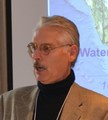AFFORDABLE AND SUSTAINABLE RE-INVESTMENT IN MUNICIPAL INFRASTRUCTURE IS ESSENTIAL: “Too often, thinking stops after the capital investment is made. Yet everyone needs to be thinking in terms of life-cycle costs,” stated Glen Brown, Chair of Asset Management BC

“The core document for asset management for BC local governments is Asset Management for Sustainable Service Delivery: A BC Framework. The title is deliberate and important because the ‘function’ and responsibility of Municipal Councils and Regional Boards is Sustainable Service Delivery. The process to support decision making is Asset Management. The Framework provides the basis for the entire asset management process for our local governments to follow. Funding agencies, as part of funding applications, request communities to identify where they are within the asset management process using the framework,” stated Glen Brown.










